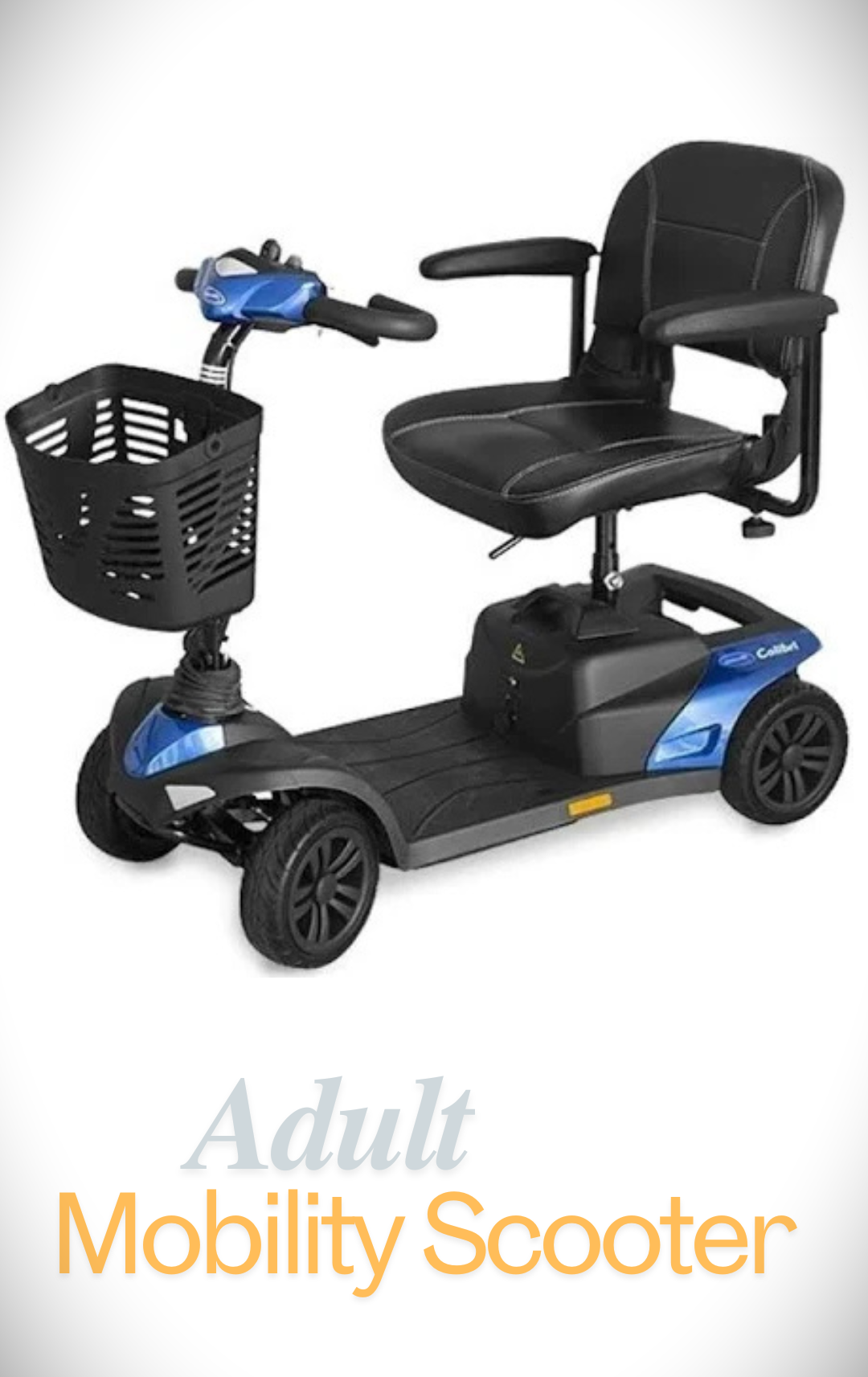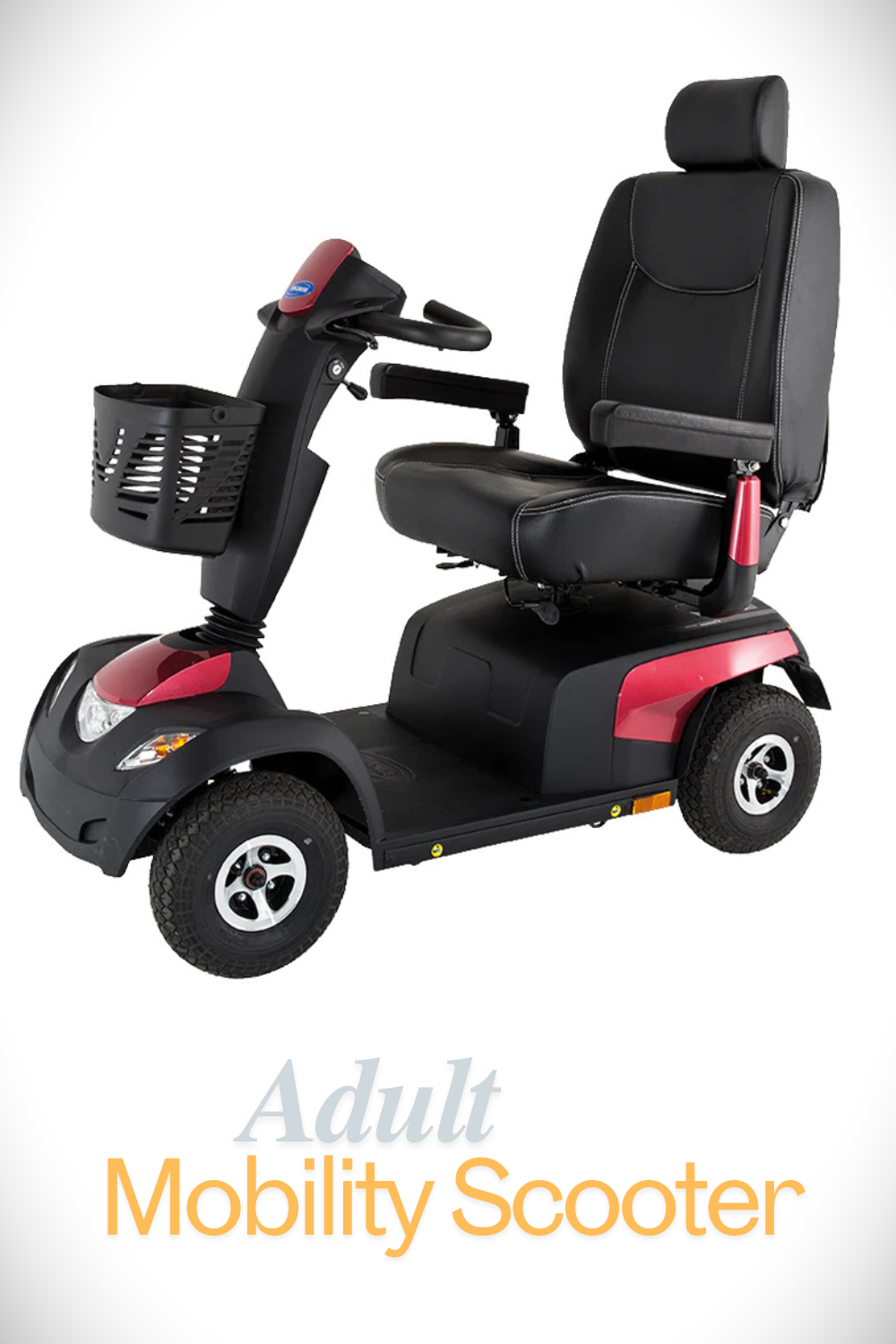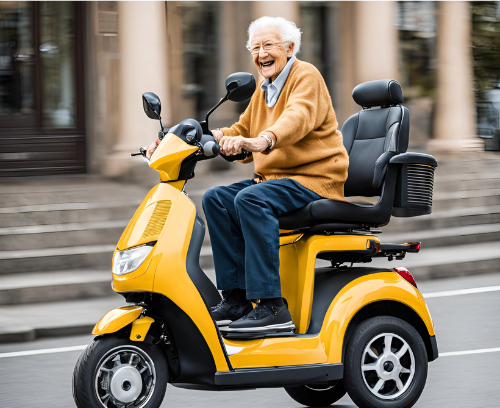- Home
- Adult Mobility Scooter
The Essential Role of Adult Mobility Scooter : Breaking Barriers in Daily Life
In today's fast-paced world, maintaining independence and mobility is crucial for adults, particularly those with physical limitations or age-related mobility issues. Enter the adult mobility scooter. It is the superhero of mobility devices, offering individuals the freedom to move around effortlessly and safely—with a dash of style.
This article explores the various aspects of adult mobility scooters, including their benefits, types, features, and tips for choosing the right one.
Buckle up your seat belt (or perhaps, adjust your scooter seat belt) as we embark on this journey.
The Importance of Mobility
Maintaining mobility and independence is not merely a matter of convenience; it significantly impacts overall well-being and quality of life.
For adults facing mobility challenges due to aging, injuries, or medical conditions, the ability to move freely and perform daily tasks independently is paramount. Without it, one might feel as stuck as a cat in a bathtub.
The loss of mobility can lead to feelings of isolation, depression, and a diminished sense of self-worth. This is where adult mobility scooters come into play, offering a lifeline to those who need it most.
Benefits of Adult Mobility Scooter
One of the primary benefits of adult mobility scooters is the enhanced independence they provide. These scooters empower users to carry out their daily activities without relying on others for assistance.
Whether it's a trip to the grocery store, a visit to a friend's house, or a leisurely ride in the park, mobility scooters enable users to maintain an active and engaged lifestyle. This newfound autonomy fosters a sense of dignity and self-confidence, which is often compromised when one's only mode of transport is a pair of fuzzy slippers.
Moreover, adult mobility scooters are designed to improve overall mobility. Unlike traditional wheelchairs or walking aids, mobility scooters are equipped with powerful motors and robust wheels, allowing users to navigate various terrains with ease.
Whether it's navigating through the narrow aisles of a store or exploring outdoor landscapes, these scooters ensure a smooth and comfortable ride. The ability to move freely without physical strain opens up new possibilities for users, enabling them to participate in activities they may have once thought impossible—like joining a scooter gang or winning the neighborhood's slowest race.
Safety Features that Make a
Difference
Safety is another critical aspect of adult mobility scooters.
These devices are engineered with advanced safety features to ensure the user's well-being. Anti-tip mechanisms, comfortable seating, intuitive controls, and reliable braking systems are just a few of the safety enhancements that come standard with modern mobility scooters.
These features
make them a safer alternative to other mobility aids, reducing the risk of
falls and injuries. For individuals with conditions such as arthritis, chronic
pain, or balance issues, the stability and support offered by mobility scooters
can be life-changing.
Social Engagement and
Emotional Well-being
In addition to the physical benefits, mobility scooters also play a vital role in promoting social engagement. Social isolation is a common issue among individuals with mobility challenges, leading to feelings of loneliness and depression.
By providing a means to participate in social activities and community events, mobility scooters help users stay connected with their friends, family, and society at large. The ability to attend gatherings, visit public places, and enjoy outdoor activities contributes significantly to mental and emotional well-being.
Choosing the Right Scooter
As we delve deeper into the world of adult mobility scooters, this article will explore the different types of scooters available, the key features to consider when choosing one, and tips for making an informed decision.
Whether you're seeking a scooter for indoor use, outdoor adventures, or travel, understanding the various options and their benefits will help you find the perfect solution to enhance your mobility and independence.
So, let's embark on this journey to discover how adult mobility scooters can transform lives and bring newfound freedom to those who need it most.
Types of Adult Mobility Scooter
There are various types of mobility scooters available, each catering to different needs and preferences. Understanding these types can help users make an informed decision:
1. Travel Scooters:
Also known as portable scooters, travel scooters are lightweight and easy to disassemble. They are designed for individuals who require a scooter that can be easily transported in a car trunk or taken on public transportation.
2. Folding Scooters:
Folding scooters are compact and can be easily folded for storage or transportation. They are an excellent choice for users who have limited space or frequently travel.
3. Three-Wheel Scooters:
These scooters offer a tighter turning radius, making them ideal for indoor use or navigating through crowded spaces. They are known for their agility and ease of maneuvering.
4. Four-Wheel Scooters:
Four-wheel scooters provide superior stability and balance, making them suitable for outdoor use and rough terrains. They offer a smoother ride and can handle various surfaces, including gravel and grass.
5. Heavy-Duty Scooters:
Designed for users with higher weight capacities, heavy-duty scooters are built with robust frames and powerful motors. They are perfect for individuals who need a durable and reliable mobility solution.
Key Features to Consider
1. Weight Capacity:
It is crucial to select a scooter that can comfortably support the user's weight. Most scooters have weight capacities ranging from 250 to 500 pounds.
2. Battery Life:
The battery life of a mobility scooter determines how far it can travel on a single charge. Users should consider their typical usage patterns and choose a scooter with a battery range that suits their needs.
3. Comfort:
Look for scooters with padded seats, adjustable armrests, and ergonomic controls to ensure maximum comfort during use. Some models also offer suspension systems for a smoother ride.
4. Portability:
Depending on the user's lifestyle, portability may be an essential factor. Travel scooters and folding scooters are ideal for those who need a scooter that can be easily transported.
5. Speed and Range:
Different scooters offer varying speeds and travel ranges. Users should consider how fast they need to travel and how far they plan to go on a regular basis.
6. Accessories and Customization:
Many scooters come with optional accessories such as baskets, cup holders, and cane holders. Customization options can enhance the user's experience and convenience.
Tips for Choosing the Right Adult Mobility Scooter
Selecting the right mobility scooter can be overwhelming, given the wide range of options available.
Here are some tips to help users make an informed decision:
1. Assess Your Needs:
Consider the primary purpose of the scooter, whether it is for indoor use, outdoor use, or travel. Identifying the specific needs will narrow down the options.
2. Test Drive:
Whenever possible, test drive different models to get a feel for their comfort, maneuverability, and ease of use. This hands-on experience can provide valuable insights.
3. Consult a Healthcare Professional:
Healthcare professionals, such as occupational therapists, can offer expert advice on choosing a scooter that aligns with the user's medical condition and mobility requirements.
4. Read Reviews:
Online reviews and testimonials from other users can provide valuable information about the performance and reliability of different scooter models.
5. Budget Considerations:
Determine a budget and explore scooters within that range. While it is essential to find an affordable option, prioritize quality and features that meet the user's needs.
Conclusion
Adult mobility scooter plays a vital role in enhancing the independence and quality of life for individuals with mobility challenges. By understanding the various types, features, and benefits of these scooters, users can make informed decisions and choose a mobility solution that best suits their needs.
Whether it's regaining the freedom to move around or staying socially engaged, mobility scooters are a valuable investment in improving overall well-being.
Back to top./Back to Homepage

